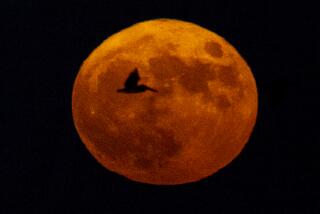Magazine Made Key Error Many Blue Moons Ago
BOSTON — Once in a blue moon, a widely accepted definition has to be rewritten.
Take the term “blue moon” itself.
For half a century, it’s been known as the second full moon in a month, like the one that appeared Wednesday, March 31. But that’s wrong, and the editors of Sky & Telescope say it’s their fault: The magazine incorrectly defined the term 53 years ago.
“I hate to admit it,” said Roger Sinnott, associate editor of Sky & Telescope.
Sinnott blamed the goof on an amateur astronomer.
James Hugh Pruett wrote a 1946 piece for the magazine after apparently misinterpreting a complex 1937 article in the Maine Farmer’s Almanac that essentially, but not clearly, said a blue moon occurs when a season has four full moons, rather than the usual three. Pruett mistakenly thought that meant a blue moon is the second full moon within the same month.
Pruett’s mistake went unnoticed for decades. A 1980 National Public Radio story about blue moons used the wrong definition. In 1986, the board game Trivial Pursuit repeated the error.
Sky & Telescope, based in Cambridge, discovered the error when it was working on an article about how January and March of this year featured what would have been two blue moons by Pruett’s definition.
Although Sky & Telescope’s editors think Pruett’s mistake led to the popular modern mis-definition of “blue moon,” it’s unclear where the now-defunct Maine Farmer’s Almanac came up with the rule.
By either definition--Pruett’s or the almanac’s--blue moons occur every two or three years, Sinnott said. The last blue moon as defined by the almanac was in June 1997. The next will be in February 2000.
More to Read
Sign up for Essential California
The most important California stories and recommendations in your inbox every morning.
You may occasionally receive promotional content from the Los Angeles Times.










